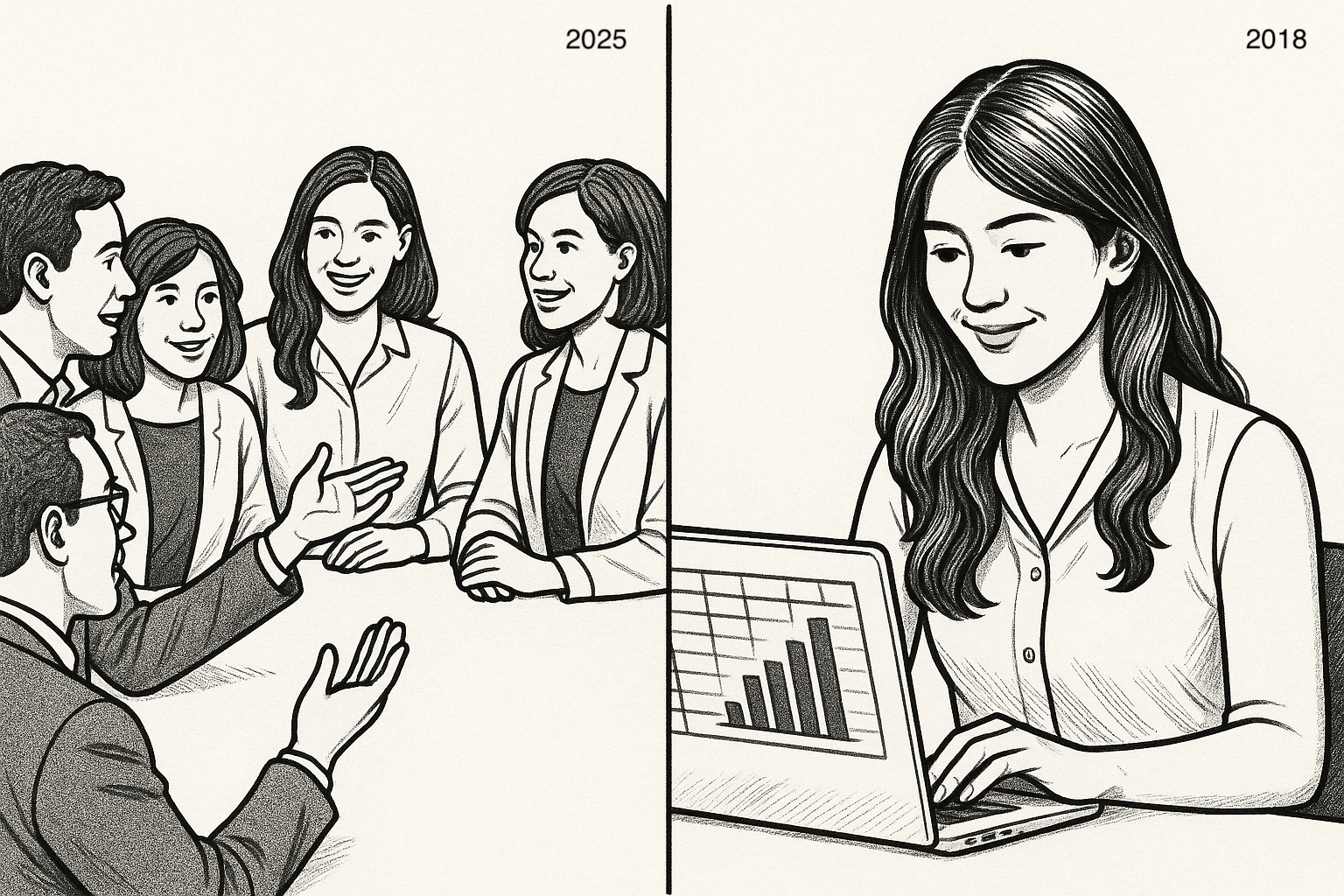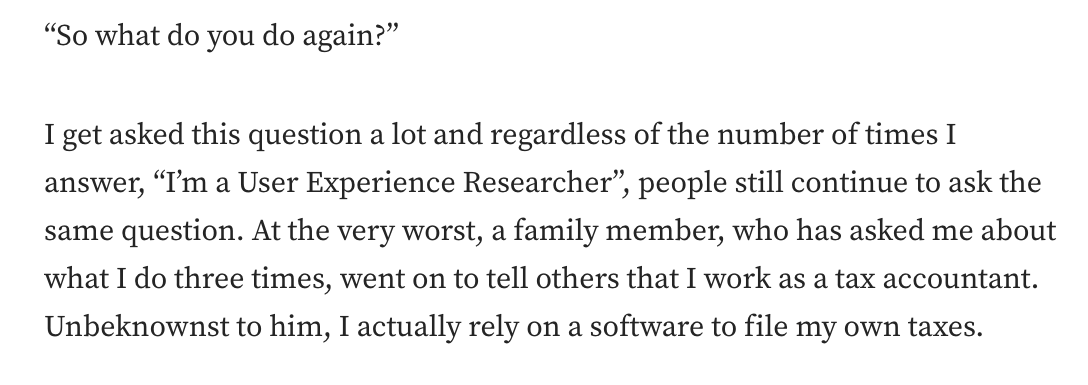
2018 was the year I officially transitioned my job from data science into user research. Back then, I decided to write an article on Medium titled, A Day In The Life of a UX Researcher, because so few people knew what user experience research is.

Screenshot from my 2018 medium article
The big problem I faced back then was showing why the team should do research and doing really great and fast research, quickly enough to prove its value. When I left the company, research was in high demand, led to product pivots that drove millions of dollars in new ARR, and was included in nearly all parts of decision-making, from pricing strategies to marketing campaigns.
Fast-forward seven years, and the landscape for researchers has changed dramatically. Let me cite talks from my dear friends in the industry as examples. We’ve seen waves of investment, incorporated methodologies across disciplines (Christelle and Jessica) cemented our impact into areas like growth (Carlos and Kakao), debated ROI (myself), explored new frontiers like web3 (Georgia), and now, AI is unlocking new ways of working we never thought possible (Ovetta).
Today, I feel lucky to be a researcher building AI for customer research. I’ve always believed this work deserves safer, more accurate AI; something that go beyond summaries to truly help us understand people. Leading a customer-first company means I still spend a lot of time doing user research myself. And through that, I’ve met amazing researchers who are already reshaping their practice with AI. It’s changed how we work so much, I decided to rewrite a new “day in the life”.
Here is what the day in the life of an AI First Researcher looks like:
8:00 AM: Read or listen to market research/industry level posts and influencer posts to keep in the loop of market trends (e.g. https://www.userinterviews.com/podcast)
9:00 AM: I start each day by finding my north star: what’s the most important customer signal right now? What’s the strongest signal across feedback, behavior, and business impact, and what deserves attention today?I use Riley to find this answer - it takes just a few seconds and allow me to know exactly where to focus, so I can advocate for what matters most
9:30 AM: Respond to Slack and email
10:00 AM: Join sprint planning and bring insights that help shape live decisions on product, marketing, and priorities. I’m no longer stuck manually analyzing data, instead, I can surface insights in tools like Riley and discuss them in real time with the team. It allows for a stronger, more continuous impact on decision-making where it counts
One of my favorite things to watch is seeing other research teams use Riley to discuss their insights with cross-functional partners and then, turn those insights into real decisions.
12:00 PM: Lunch with the team
1:00 PM: Lately, we’ve been translating customer insights directly into code, shipping product improvements based on real user behavior. This includes everything from refining edge case logic and improving UX flows to generating copy variations grounded in what resonates with customers. When questions arise, we query our insights database live to validate assumptions or resolve ambiguity before deciding whether we need a new research cycle
3:00 PM: Join research sessions or customer calls. One shift we’re seeing among AI-forward researchers is incorporating AI live during sessions. Instead of just sticking to a script, the researcher adapts in real time: when a customer shares feedback, the researcher uses an intelligence layer like Riley to instantly search for related insights. The AI analyzes existing data and surfaces patterns or answers, which the researcher can then share back with the customer
This creates a tighter loop. The customer’s feedback becomes more contextual, building on what’s already known instead of starting from scratch. It turns static sessions into dynamic ones, where insight deepens in real time, not just after the fact
5:00 PM: See if the major trends of the day have changed before I log out. Forward/share any relevant trends to stakeholder for continuation of discussion tomorrow
If I compare the day of a researcher in 2018 to now, it’s clear that the most effective researchers aren’t spending their time manually tagging data or stitching together insights anymore. The role has evolved. Researchers are now expected to be strategists: guiding product, influencing go-to-market, and making sure the customer voice shows up where it actually moves the needle. This shift is a good thing, it means we’re in a position to drive more impact than ever!
However, to do this role effectively, we need the right AI, not tools that just summarize data or tag broad trends, but ones that help us deeply understand our customers and model their behavior. This is where data science becomes the real superpower researchers should unlock. And that’s exactly what we’re building at Riley.





Claudia is the CEO & Co-Founder of Riley AI. Prior to founding Riley AI, Claudia led product, research, and data science teams across the Enterprise and Financial Technology space. Her product strategies led to a $5B total valuation, a successful international acquisition, and scaled organizations to multi-million dollars in revenue. Claudia is passionate about making data-driven strategies collaborative and accessible to every single organization.Claudia completed her MBA and Bachelor degrees at the University of California, Berkeley.